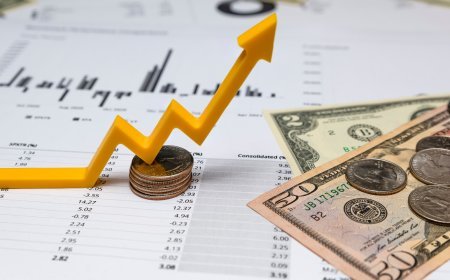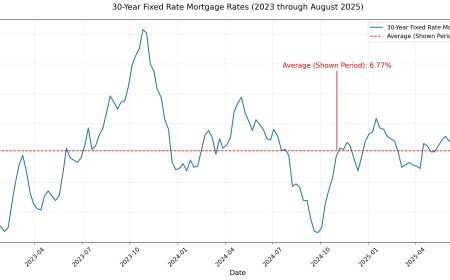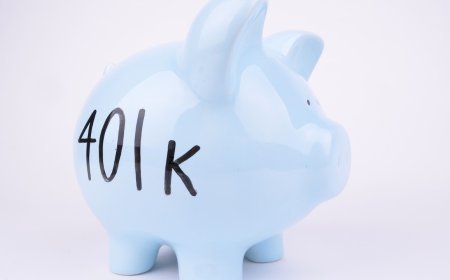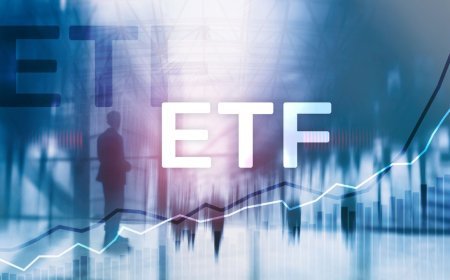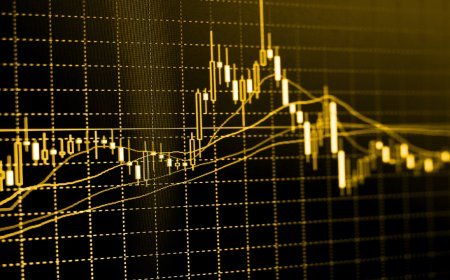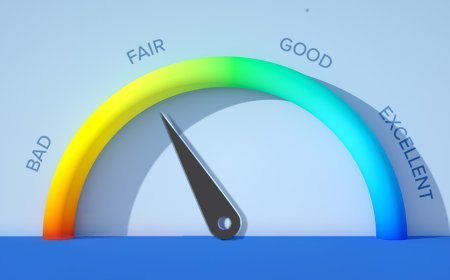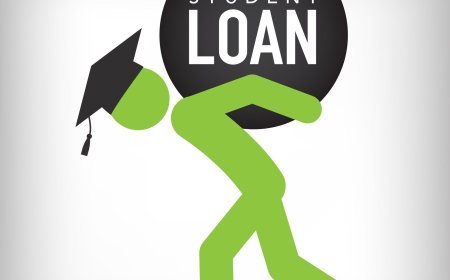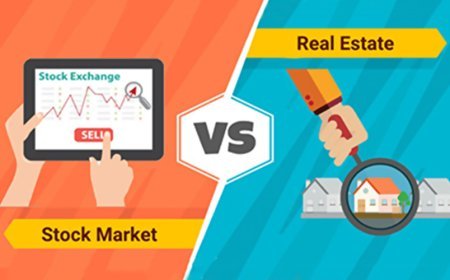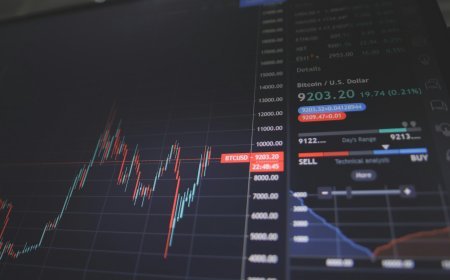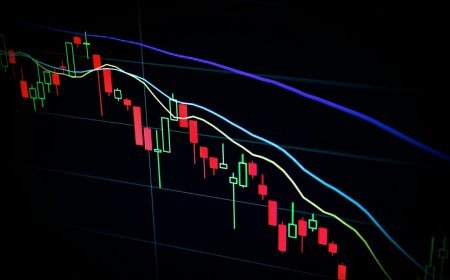AI in Stock Picking Explained: Revolutionizing Wealth Creation in 2025
This article explores how AI revolutionizes stock picking in 2025 by using machine learning, natural language processing, and predictive analytics to analyze vast datasets and recommend high-potential stocks. It details key technologies, benefits like speed and objectivity, and limitations such as data dependency and market volatility risks. Popular AI tools like TradeRiser, Kavout, BlackRock Aladdin, and Robinhood Gold are compared for features, costs, and target users. Practical tips for beginners and advanced investors, along with real-world applications, highlight how AI empowers both retail and institutional investors to optimize portfolios.

Artificial Intelligence (AI) is transforming stock picking, enabling investors to make data-driven decisions with unprecedented speed and precision. By analyzing vast datasets, spotting patterns, and predicting market trends, AI-powered tools are leveling the playing field for retail and institutional investors alike. This article explores how AI is used in stock picking, its key technologies, benefits, limitations, and practical applications for investors in 2025.
What is AI Stock Picking?
AI stock picking refers to the use of machine learning, natural language processing (NLP), and predictive analytics to identify promising stocks for investment. Unlike traditional methods that rely on human analysis of financial statements or market trends, AI processes millions of data points—such as price histories, company earnings, economic indicators, and even social media sentiment—in real time to recommend stocks with high return potential.
How AI Powers Stock Picking
AI systems leverage several advanced technologies to analyze and select stocks:
-
Machine Learning (ML):
-
Function: ML algorithms identify patterns in historical stock data, learning from past market behaviors to predict future price movements.
-
Example: A neural network might detect that stocks with specific price-to-earnings (P/E) ratios and revenue growth rates tend to outperform during inflationary periods.
-
Tools: Platforms like TradeRiser and Kavout use ML to rank stocks based on predictive scores.
-
-
Natural Language Processing (NLP):
-
Function: NLP scans unstructured data, such as news articles, earnings call transcripts, and X posts, to gauge market sentiment and detect events that could impact stock prices.
-
Example: If an NLP model detects positive sentiment in X posts about a tech company’s new product launch, it may flag the stock as a buy.
-
Tools: Bloomberg Terminal’s sentiment analysis and Yseop’s NLP-driven reports.
-
-
Predictive Analytics:
-
Function: Combines historical data with real-time inputs to forecast stock performance, volatility, and risk.
-
Example: AI might predict a stock’s 30-day return based on macroeconomic indicators like interest rates or consumer spending trends.
-
Tools: BlackRock’s Aladdin platform and QuantConnect’s algorithmic trading tools.
-
-
Big Data Processing:
-
Function: Handles massive datasets, including alternative data like satellite imagery of retail parking lots or credit card transaction volumes, to uncover hidden investment opportunities.
-
Example: AI could analyze foot traffic data to predict a retailer’s quarterly revenue before official reports.
-
Tools: Sentieo and Dataminr provide alternative data insights.
-
Benefits of AI in Stock Picking
AI-driven stock picking offers several advantages over traditional methods:
-
Speed and Scale: Processes billions of data points in seconds, far surpassing human capabilities.
-
Objectivity: Reduces emotional biases, such as fear or greed, that often skew human decisions.
-
Customization: Tailors stock recommendations to an investor’s risk tolerance, portfolio size, and goals.
-
Accessibility: Platforms like Robinhood and eToro integrate AI tools, making sophisticated analysis available to retail investors.
-
Proven Performance: Studies from 2024 show AI-driven portfolios often outperform traditional benchmarks like the S&P 500 by 2–5% annually, though results vary.
Limitations and Risks
Despite its potential, AI stock picking has drawbacks:
-
Data Dependency: AI models rely on quality data; inaccurate or incomplete datasets can lead to flawed predictions.
-
Market Volatility: AI struggles to predict black swan events, like geopolitical crises or sudden regulatory changes.
-
Overfitting: Some algorithms may over-optimize for historical patterns, failing to adapt to new market dynamics.
-
Costs: Premium AI tools, like Bloomberg Terminal, can cost $2,000+/month, though retail platforms like TradeRiser offer plans starting at $20/month.
-
Ethical Concerns: Over-reliance on AI may lead to market manipulation risks, as seen in debates on X about algorithmic trading’s impact on price volatility.
Popular AI Stock Picking Tools in 2025
Several platforms stand out for their AI capabilities, catering to different investor needs:
-
TradeRiser:
-
Features: Uses ML to score stocks based on momentum, value, and growth metrics. Offers portfolio tracking and risk analysis.
-
Cost: $20–$100/month, with a free trial.
-
Best For: Retail investors seeking affordable, user-friendly AI tools.
-
-
Kavout:
-
Features: Kai Score ranks stocks using ML and alternative data. Integrates with brokers like Interactive Brokers.
-
Cost: $50–$200/month for premium features.
-
Best For: Active traders needing advanced analytics.
-
-
BlackRock Aladdin:
-
Features: Institutional-grade AI for portfolio optimization and risk management. Includes ESG (Environmental, Social, Governance) scoring.
-
Cost: Enterprise pricing, typically $10,000+/month.
-
Best For: Hedge funds and large portfolios.
-
-
Robinhood Gold:
-
Features: AI-driven stock recommendations and market insights for retail investors. Includes margin trading and Level II market data.
-
Cost: $5/month.
-
Best For: Beginners and cost-conscious investors.
-
Real-World Applications
-
Retail Investors: Use platforms like Robinhood or TradeRiser to discover undervalued stocks or diversify portfolios. For example, a 2024 case study showed TradeRiser users achieved 8% annualized returns by following AI-recommended small-cap stocks.
-
Hedge Funds: Employ AI to execute high-frequency trades or optimize portfolios. BlackRock’s Aladdin reportedly manages $20 trillion in assets, leveraging AI for risk-adjusted returns.
-
Robo-Advisors: Platforms like Wealthfront use AI to automate stock selection and rebalancing, ideal for passive investors.
How to Get Started with AI Stock Picking
-
Choose a Platform: Select a tool based on your budget and experience level. Robinhood Gold ($5/month) is great for beginners, while Kavout suits advanced traders.
-
Define Goals: Decide if you’re seeking short-term gains, long-term growth, or dividend income. AI tools can tailor recommendations accordingly.
-
Start Small: Test AI recommendations with a small portion of your portfolio to assess performance.
-
Monitor and Adjust: Use AI dashboards to track stock performance and refine strategies. Most platforms offer real-time alerts.
-
Stay Informed: Follow financial news and X discussions to complement AI insights, as human intuition still plays a role.
Practical Tips for 2025
-
Diversify Data Sources: Combine AI tools with traditional research to mitigate overfitting risks.
-
Leverage Free Trials: Test platforms like TradeRiser or Kavout before committing to paid plans.
-
Check Security: Ensure platforms use encryption and comply with regulations like SEC rules or GDPR. For example, Robinhood uses bank-grade encryption for data protection.
-
Understand Fees: Account for trading fees and platform costs, which can erode returns. Robinhood offers commission-free trades, while Kavout may charge per-trade fees.
-
Stay Cautious: AI isn’t foolproof. Always assess recommendations against your risk tolerance and market conditions.
Final Thoughts
AI stock picking is revolutionizing investing in 2025 by offering speed, precision, and accessibility. Tools like TradeRiser, Kavout, and Robinhood Gold empower retail investors, while institutional platforms like BlackRock Aladdin dominate professional markets. However, AI’s effectiveness depends on data quality, market conditions, and user diligence. By combining AI insights with personal research and risk management, investors can harness its potential to build wealth. Explore platforms at traderiser.com, kavout.com, or robinhood.com to start your AI-driven investing journey.
What's Your Reaction?
 Like
0
Like
0
 Dislike
0
Dislike
0
 Love
0
Love
0
 Funny
0
Funny
0
 Angry
0
Angry
0
 Sad
0
Sad
0
 Wow
0
Wow
0




